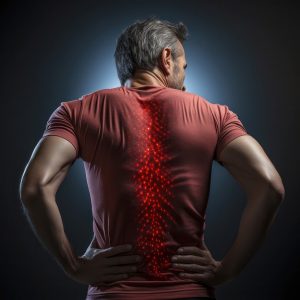Key Takeaways:
- Learn practical strategies for managing back pain caused by herniated discs.
- Discover the role of physical therapy, medication, and lifestyle changes.
- Find out how to prevent herniated discs through proper ergonomics and exercise.
- Understand when surgical options may be necessary and what they entail.
Introduction to Herniated Discs and Back Pain
Herniated discs commonly cause back pain, affecting many individuals worldwide. They occur when the cushion-like discs between the vertebrae slip out of place or rupture, causing pain, numbness, and sometimes even mobility issues. For those in Florida, finding specialized care for a herniated disc Florida is essential to recovery. While a herniated disc can be a debilitating condition, there are several strategies available to manage the pain and improve quality of life. Understanding the available treatment options and making informed decisions can significantly impact an individual’s well-being.

The Role of Physical Therapy in Managing Back Pain
One of the primary treatments for herniated discs is physical therapy. A tailored physical therapy program can help strengthen the muscles around the spine, improve flexibility, and reduce pressure on the affected nerves. Exercises like gentle stretches, stability exercises, and aerobic activities can be particularly beneficial. Physical therapists can also teach patients to maintain proper posture and biomechanics to prevent further injury. The individualized attention and guidance physical therapists provide enable patients to perform exercises correctly and safely, maximizing the benefits and reducing the risk of exacerbating the condition. Consistent physical therapy sessions and home exercise routines can significantly improve pain and functional abilities.
Medications and Pain Relief Methods
For immediate relief, medications such as anti-inflammatory drugs, pain relievers, and muscle relaxants are often prescribed. In some cases, epidural steroid injections can provide longer-lasting relief by reducing inflammation around the affected area. Over-the-counter options like ibuprofen and acetaminophen can also effectively manage mild to moderate pain. Patients must consult their healthcare providers to determine the most appropriate medication regimen. Understanding these medications’ proper use and potential side effects is vital for effective management and avoiding possible complications. In addition to pharmaceutical treatments, alternative pain relief methods such as acupuncture, chiropractic care, and massage therapy may offer supplementary benefits. These holistic approaches can help in addressing pain and promoting overall well-being without relying solely on medications.
Impact of Lifestyle Changes on Back Pain
Incorporating lifestyle changes can make a significant difference in managing back pain due to herniated discs. Maintaining a healthy weight helps to reduce the strain on the spine. Practicing good posture by keeping the back straight and shoulders aligned is crucial. Avoiding activities that strain the back, such as heavy lifting, can prevent further damage. Additionally, quitting smoking and reducing alcohol consumption can enhance overall well-being and aid in recovery by improving blood flow and reducing inflammation. These changes are beneficial for managing back pain and contribute to overall health improvement. Regular low-impact exercises like walking, swimming, or cycling can keep the body active and support spinal health. Developing and integrating a consistent exercise routine into daily habits can provide long-term benefits and significantly reduce the risk of recurring issues.
Preventive Measures for Herniated Discs
Preventing herniated discs in the first place is the best approach. This can be achieved through regular exercise, proper ergonomics, and safe lifting techniques. Strengthening the core muscles is vital in supporting the spine and preventing disc injuries. Workplace ergonomics, such as using ergonomic chairs and taking frequent breaks, are essential preventive measures. It’s also helpful to avoid prolonged periods of sitting or standing by incorporating movement throughout the day. Simple adjustments, such as setting up a standing desk or using a lumbar support pillow, can significantly impact spine health. Educating oneself on ergonomically correct movements and postures, whether at home or work, equips individuals to protect their spine consciously. Preventive measures guard against herniated discs and foster a healthier spine, leading to a better quality of life.
When to Consider Surgical Options
In severe cases, when conservative treatments fail to alleviate the pain, surgical options may be considered. Procedures such as microdiscectomy or spinal fusion can help relieve the nerve pressure and restore function. Discussing these options with a healthcare provider to understand the risks and benefits involved is essential. Surgical interventions are typically reserved for cases where there is significant nerve compression, loss of motor function, or severe and persistent pain that doesn’t respond to other treatments. Understanding the potential outcomes and recovery process is crucial when considering surgery. Post-surgical rehabilitation, including physical therapy, ensures successful recovery and long-term benefits. The decision to undergo surgery should be made collaboratively between the patient and their healthcare team, considering individual circumstances and overall health.
Conclusion
Managing back pain caused by herniated discs requires a multifaceted approach, encompassing physical therapy, medications, lifestyle changes, and preventive measures. By staying proactive and informed, individuals can significantly reduce pain and improve their quality of life. Consulting with healthcare professionals and utilizing available resources are critical to achieving this goal. A well-rounded plan that includes medical treatment, physical therapy, and lifestyle adjustments can help individuals manage their symptoms and live more comfortably. Taking responsibility for one’s health, staying consistent with preventive measures, and actively participating in one’s treatment plan are essential for achieving long-term relief and maintaining a healthy spine.
